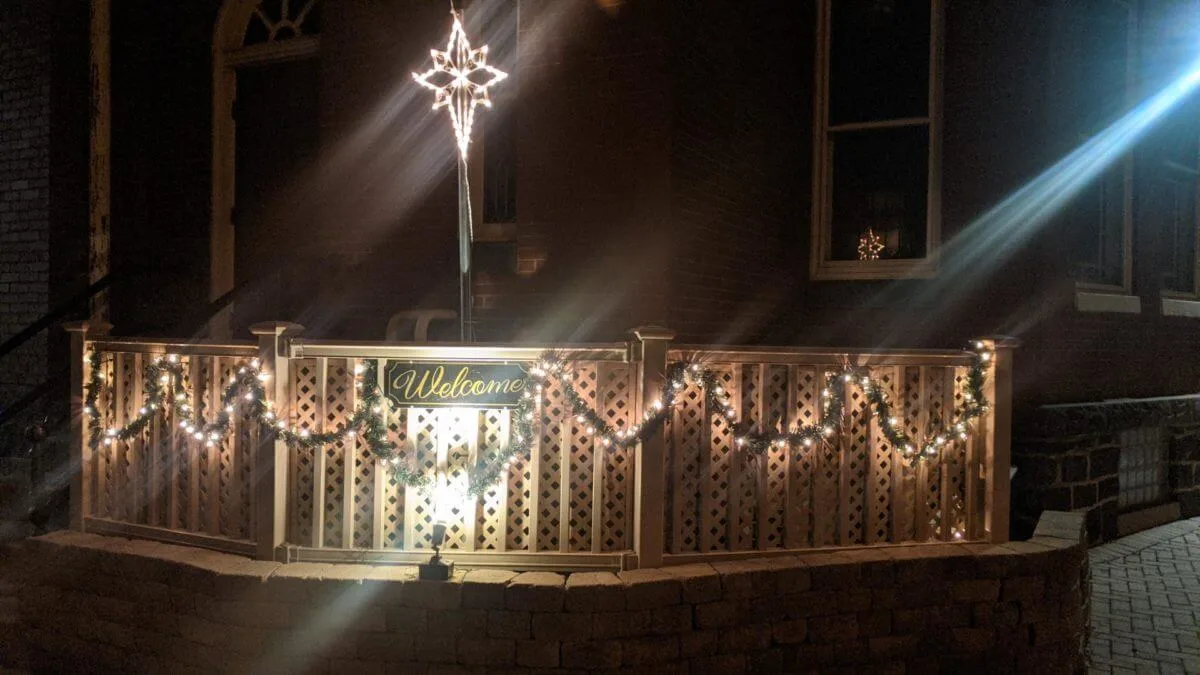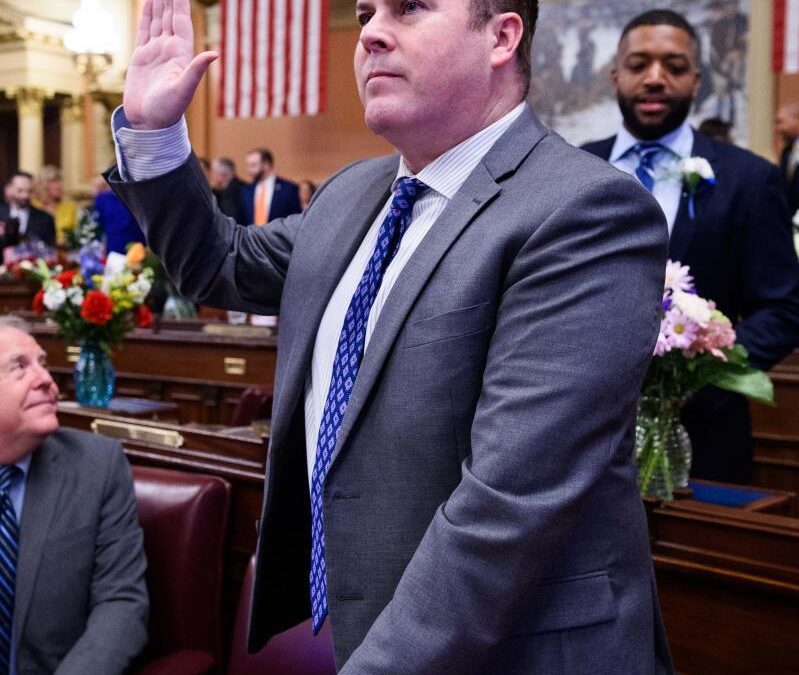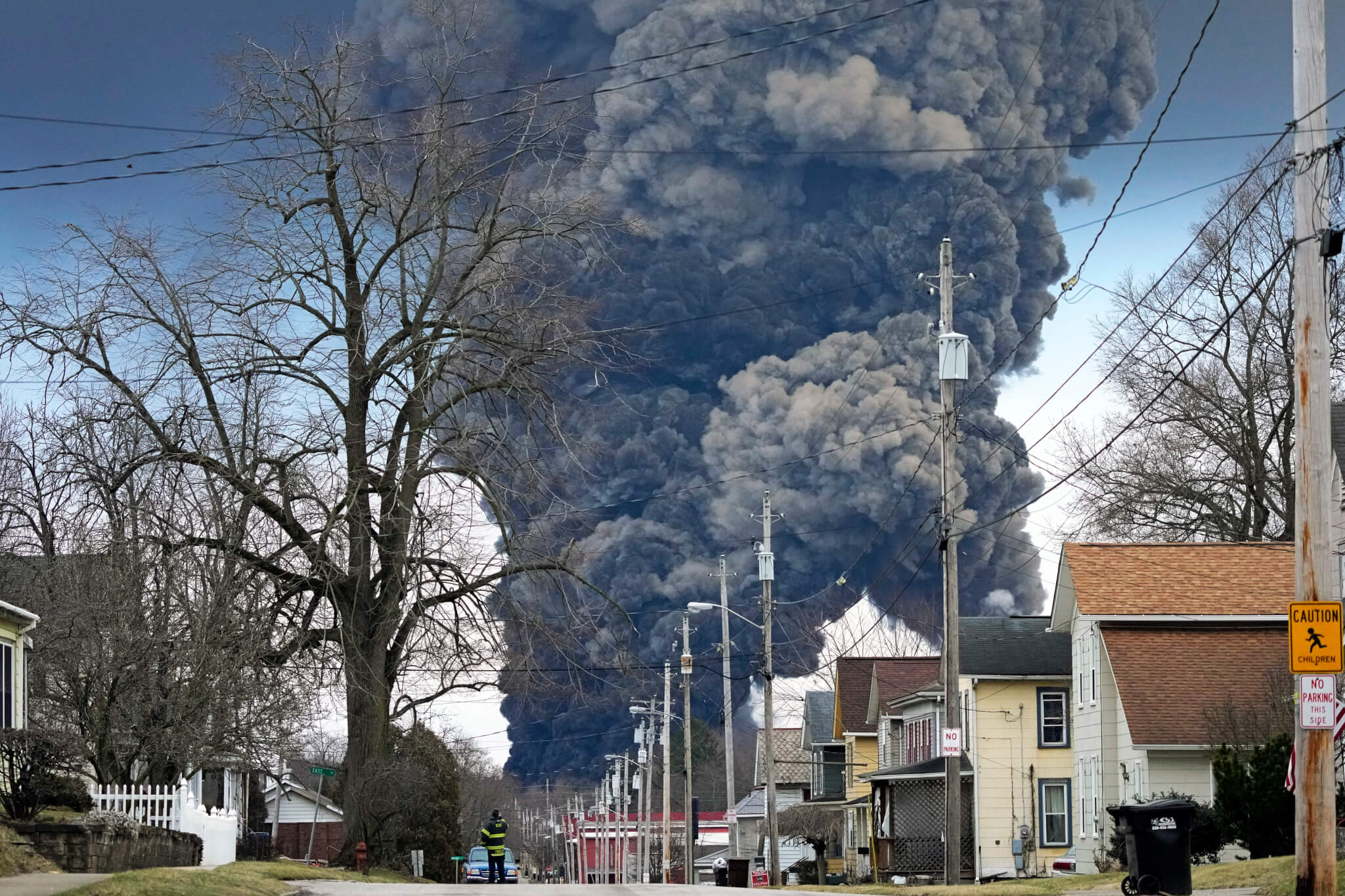
St. James Lutheran Church in Gettysburg, Adams County, is prepared to welcome its congregation for outdoor services on Christmas Eve. (Courtesy of St. James Lutheran Church)
Churches across Pennsylvania are planning outdoor and virtual services for Christmas Eve and Christmas Day—and beyond—to keep their congregations safe from the coronavirus.
As many as 900 people normally fill the pews at St. James Lutheran Church in Gettysburg for Christmas Eve services.
But this year, the Rev. Michael Allwein plans to take the celebration to the streets.
With permission from the borough, he plans to block off Stratton Street in downtown Gettysburg to hold outdoor services in front of the church. With an elevated porch and a sound system powerful enough to reach the ears of parishioners down the block, he thinks it’ll work, so long as it doesn’t rain.
“The services will be short, about 25 minutes,” he said. For safety reasons the church has cancelled community singing, but Allwein is planning to bring in a number of musicians to make the service as lively as possible. Masks are required, and he is asking all of his congregants to socially distance.
“I trust we’re going to be okay,” he said.
St. James is one of many churches and religious institutions across the state finding new ways to bring people together for traditional holiday celebrations while also keeping them safe amidst the novel coronavirus pandemic.
Earlier this month, Gov. Tom Wolf issued a statewide order intended to mitigate the spread of the novel coronavirus virus. While the order prohibited gatherings of more than 10 people, it specifically excluded churches and places of congregate worship. Wolf strongly encouraged faith leaders to find alternate ways to worship, and asked that they carefully consider the health of their congregation.
Many churches closed in the spring, during the first wave of the pandemic.
“We’ve been very, very cautious,” Allwein said.
His parish in Adams County has not held indoor services since the second week of March, and he had hoped to re-open in time for Advent, just after Thanksgiving. Recently, however, when “the numbers began to spike,” Allwein said, “we felt that it wasn’t a good idea to go back inside.”
St. Thomas the Apostle in Glen Mills, Delaware County, re-opened four months ago, and the Rev. Stephen Shott said they’ve done all they can to make the space safe for their parishioners. The church requires masks, marks off every other pew to force parishioners to socially distance, places hand sanitizer at each entrance, and asks people to stay after services to help wipe down the pews. “I don’t personally know anybody from our parish that has contracted COVID,” Shott said.
Stephen Conley, 72, said the parish has “done a really good job [of] trying to make it feel safe when we come in, but also letting people know that it’s perfectly all right if you want to watch from home if you don’t feel safe.”
For Christmas, the parish has added additional mass times so that no one service will be too crowded, and Shott is encouraging people to stay at home to watch live streamed services on the church website.
Conley and his wife, Marianne, also 72, plan to attend Christmas Eve mass at St. Thomas in person, but if the parking lot looks too crowded, they’ll go back home to watch it online instead.
In North Huntingdon, Westmoreland County, New Hope Presbyterian Church has been holding socially distanced in-person services on Sundays and streaming them on Facebook Live for congregation members who couldn’t be there in person.
The Rev. Brenda Barnes has no plans for an in-person service for Christmas Eve, but said she won’t turn anyone away, either.
Instead, she plans to host a “Cozy Christmas Eve” on Facebook Live.
“Christmas Eve is when we bring our family and friends who don’t normally come to church,” said Barnes, who is personally putting together at least 100 invitation bags, each with cookies and a candle to light during “Silent Night,” which she’ll drop off at the homes of members of her congregation. “We want to invite as many [to attend] virtually as we can, and that takes a physical invitation.”
Throughout the pandemic, the congregation has not sung as many hymns as it normally would, as part of its efforts to limit the spread of the coronavirus. But for Christmas Eve, since there won’t be people in the sanctuary, Barnes said, “we can have more music and more singing because we don’t have to worry about wearing masks.”
Virtual services were new for many churches this year, but religious leaders said they plan to continue them even after the pandemic is over.
“I see it as missional,” said Bob Ruefle, a Presbyterian minister who consults with churches that are looking to move their services online. “Using media to remain connected to faith is loving your neighbor, and COVID-19 has affirmed a need to move forward through technology.”
Shott said he plans to use live streamed services after the pandemic is over to stay in touch with sick and homebound parishioners. “I’ve realized how important it is for people to remain connected to their community and their faith,” he said.
Barnes says that after moving her services online, her parish has reached people from all over the world.
“Sometimes on Sunday mornings we have people from Vietnam and Russia, and all over the United States watching and participating with us.”
Politics

Philadelphia DA cancels arrest warrant for state Rep. Kevin Boyle on eve of Pa. primary
Philadelphia District Attorney Larry Krasner said a detective had sought the warrant against Boyle, a Democrat whose district includes a section of...

Influencers and creators find new ways to engage young Philadelphia voters
Rec Philly, a space for creators and influencers, teamed up with Show Up Strong to get hundreds of young Philadelphia residents engaged in the...

New Biden rule protects privacy of women seeking abortions
Under the new rules, state officials and law enforcement cannot obtain medical records related to lawful reproductive health care with the goal of...
Local News

Conjoined twins from Berks County die at age 62
Conjoined twins Lori and George Schappell, who pursued separate careers, interests and relationships during lives that defied medical expectations,...

Railroad agrees to $600 million settlement for fiery Ohio derailment, residents fear it’s not enough
Norfolk Southern has agreed to pay $600 million in a class-action lawsuit settlement for a fiery train derailment in February 2023 in eastern Ohio,...





